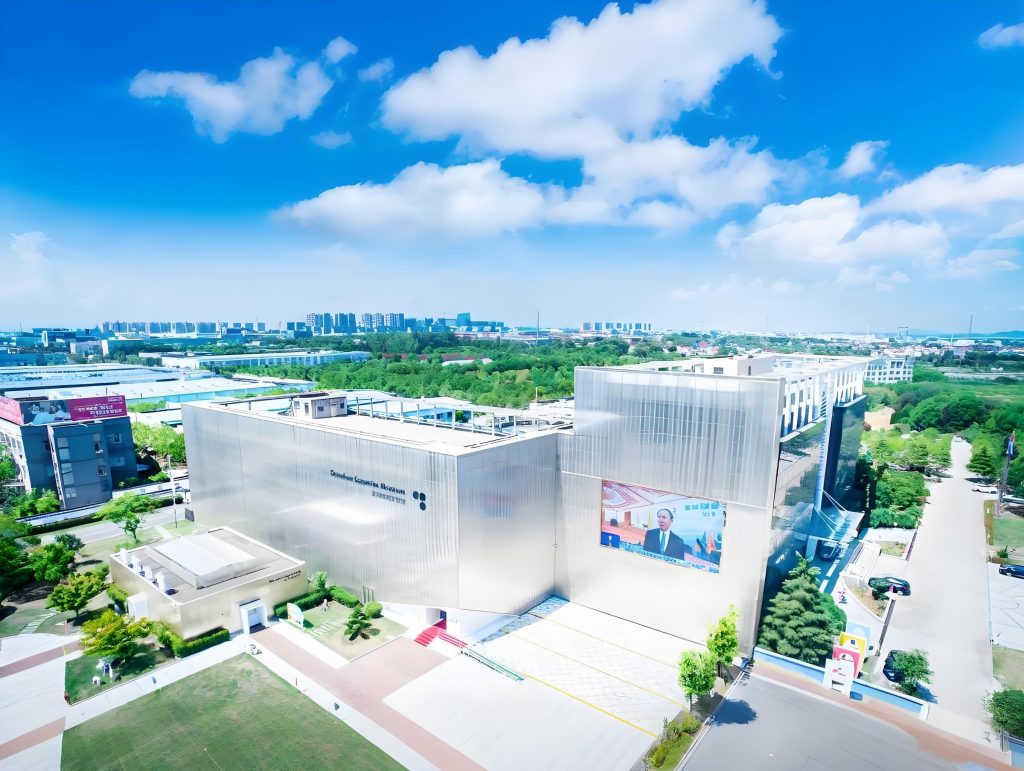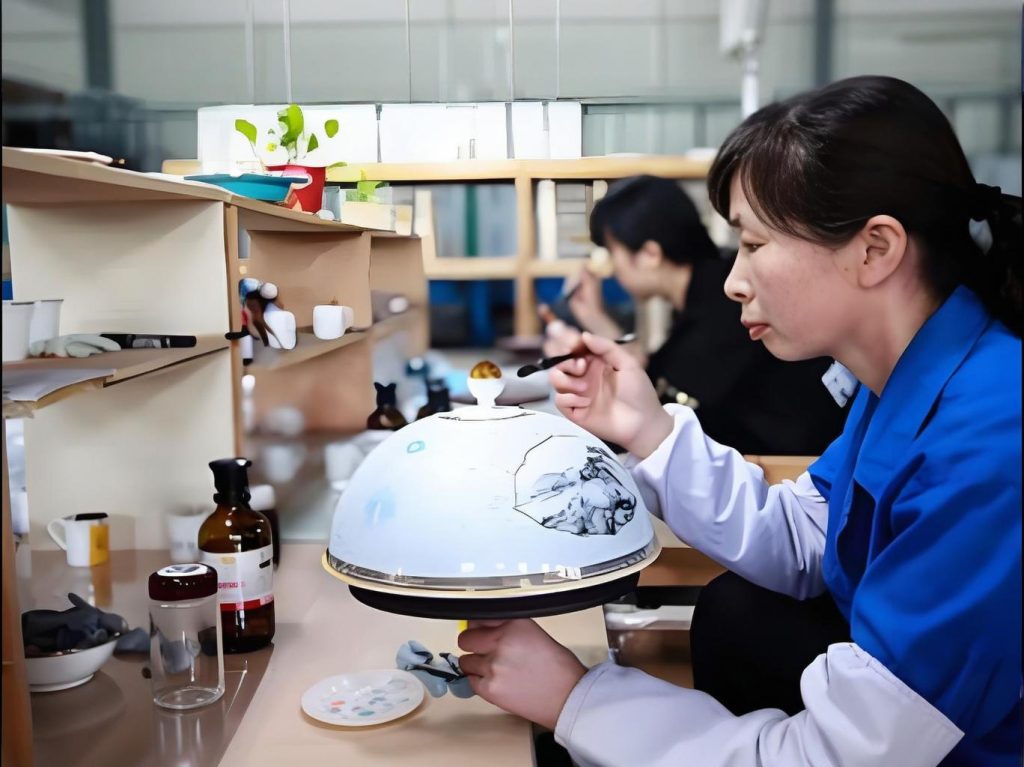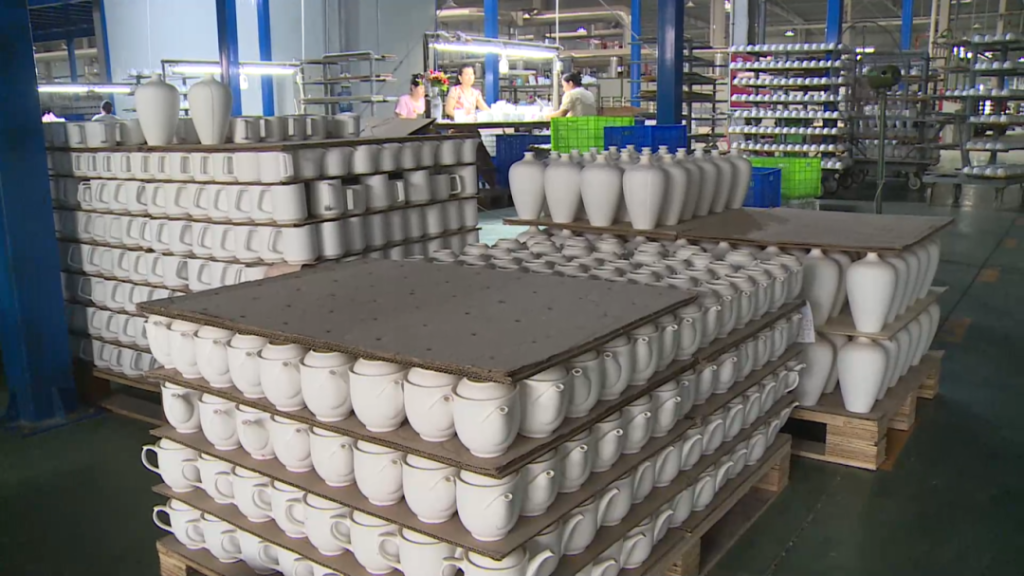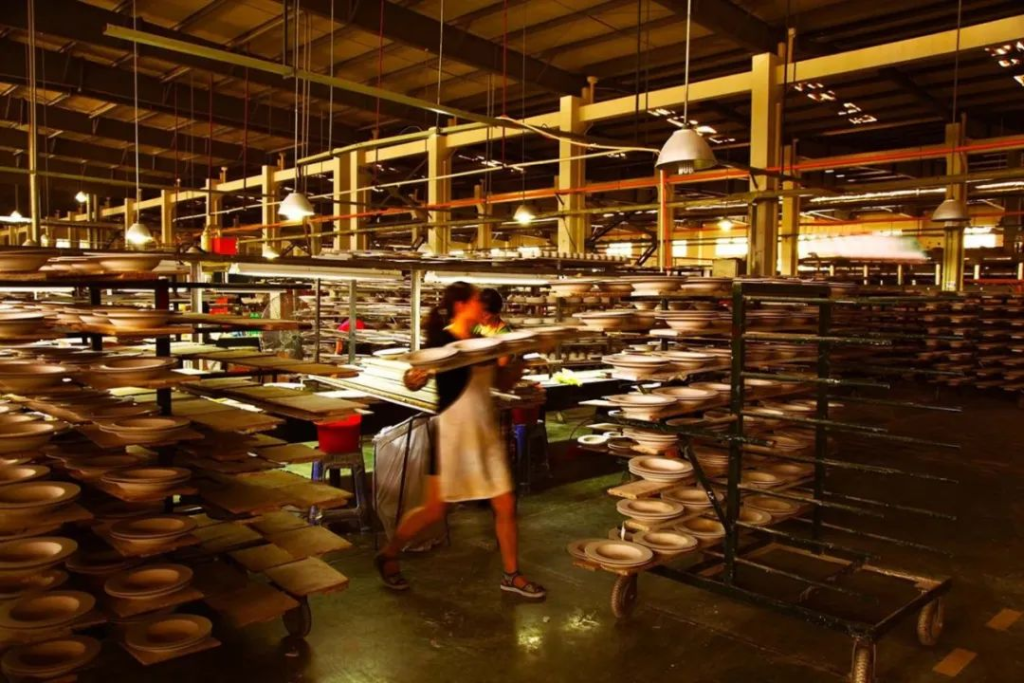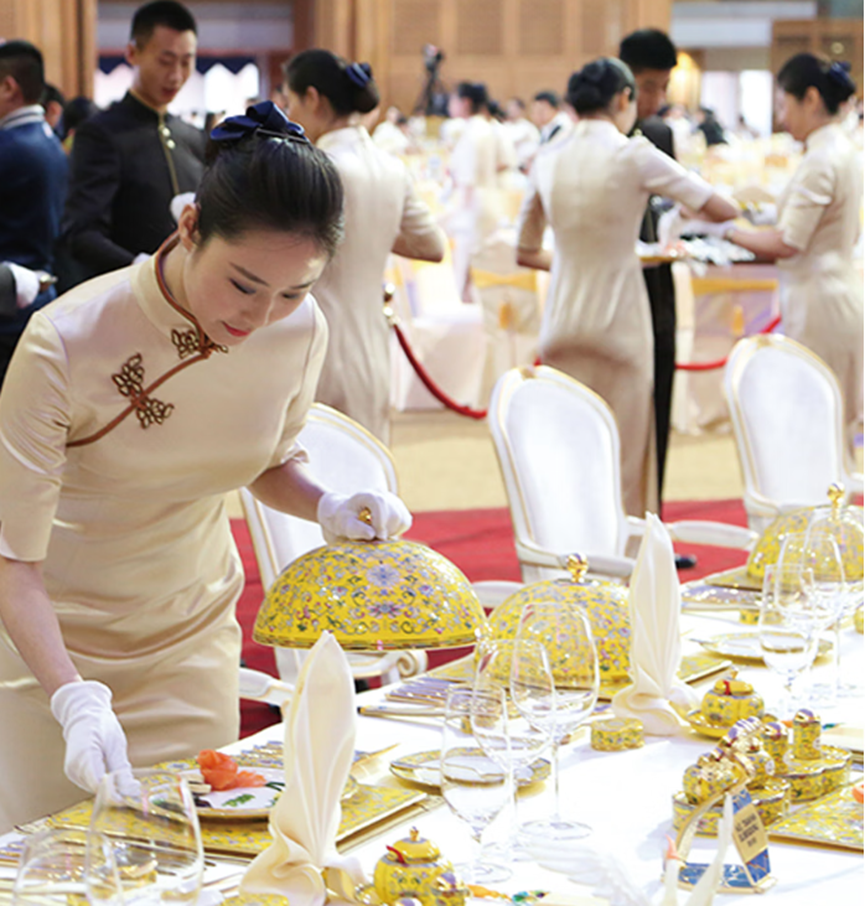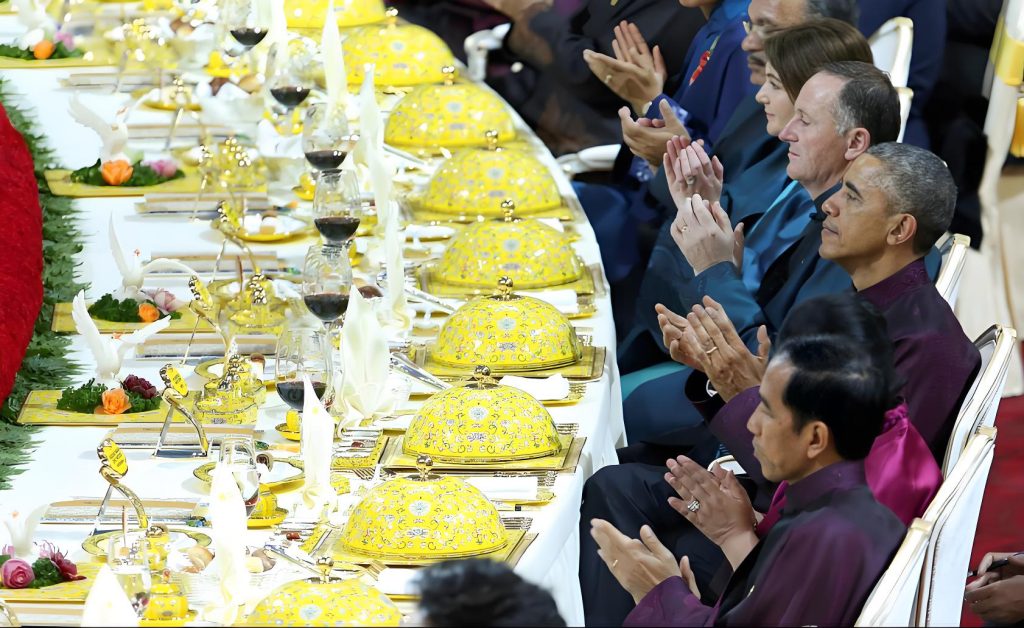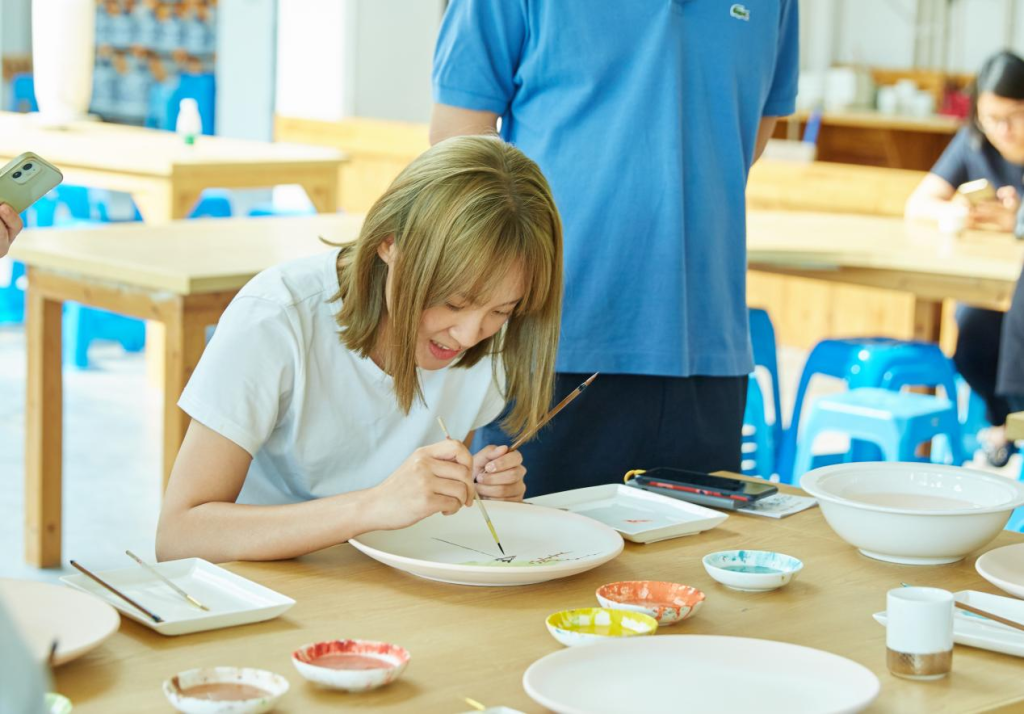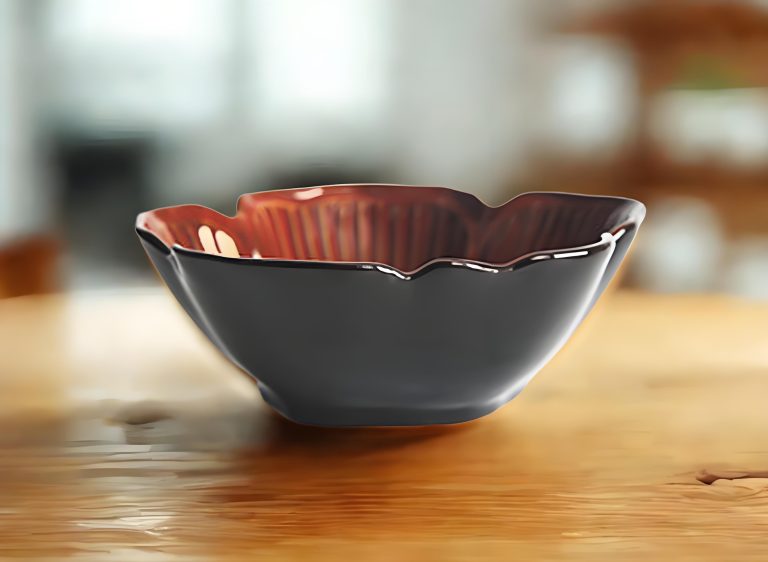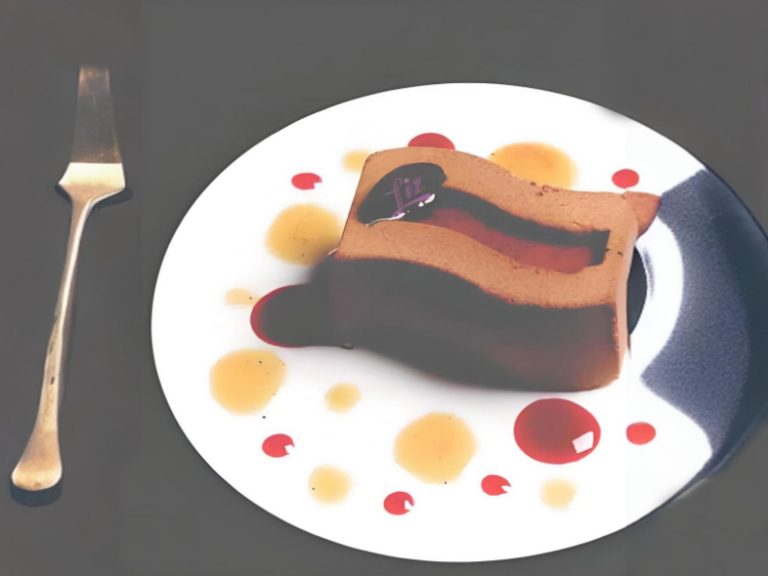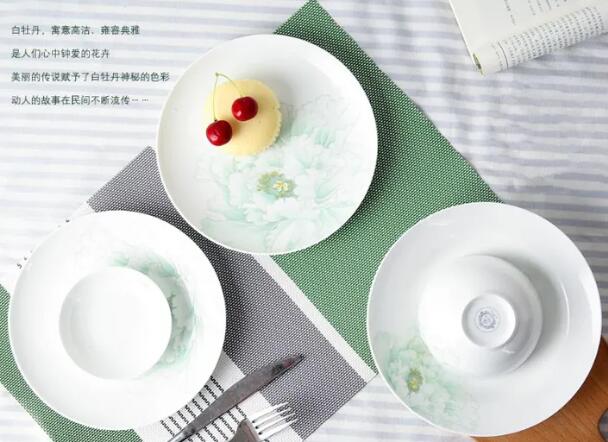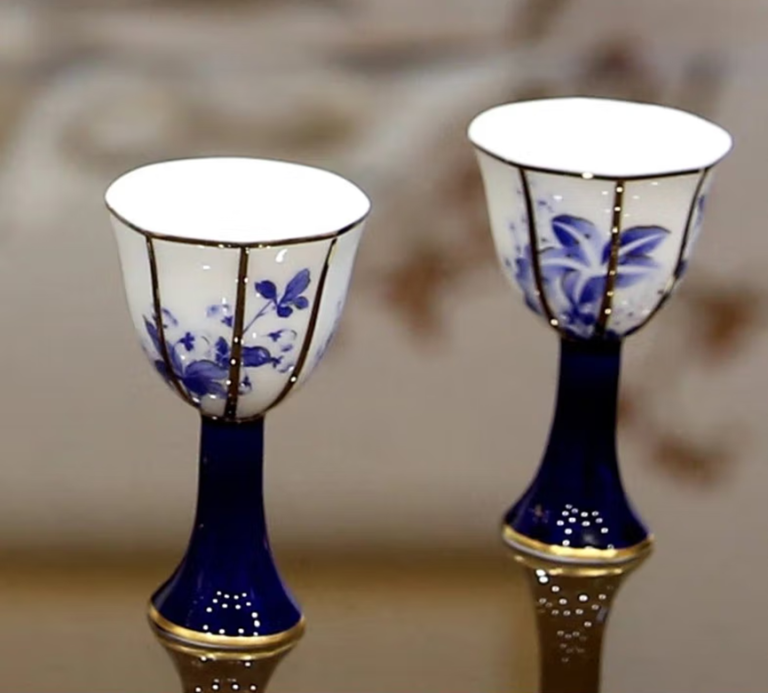Encyclopedia of Pu-erh Tea: History, Production, Identification, and Health Benefits
Pu’er tea is neither green tea nor black tea, nor is it what most people consider black tea. It is a general term for various types of Yunnan compressed tea made by steaming and pressing green tea or black tea, including tuocha, bingcha, fangcha, and jincha. According to the standard published by the Yunnan Provincial Bureau of Standards and Metrology in March 2003: “Pu’er tea is compressed tea and pressed tea made from sun-dried large-leaf tea from a specific region in Yunnan Province, processed through post-fermentation.”
Pu’er tea is one of the top ten traditional famous teas in China, mainly produced in the south of Changning County in Yunnan, along the east and west banks of the Lancang River, in counties such as Fengqing, Lincang, Yongde, Menghai, Simao, and Jinghong, with the Xishuangbanna area being the most prominent.
The history of Pu’er tea can be traced back to the Eastern Han Dynasty, over two thousand years ago. There is a saying among the people that it is the “legacy of Wuhou” (Wuhou refers to the Chancellor Zhuge Liang of the Three Kingdoms period), indicating that the cultivation and use of Pu’er tea has a history of at least 1700 years.
Historically, Pu’er tea referred to qingmao tea made from large-leaf tea produced mainly in the “Six Major Tea Mountains” of Xishuangbanna, and various types of compressed tea made from qingmao tea, such as Pu’er fangcha, Pu’er tuocha, qizi bingcha, Tibetan compressed tea, yuancha, bamboo tube tea, and blended loose tea.
According to Li Shi’s “Continued Records of the Historian” in the Southern Song Dynasty, Pu’er tea was used by the Western Barbarians as early as the Tang Dynasty. During the Qing Dynasty, tea produced around Pu’er Prefecture (modern-day Pu’er County) was transported to Pu’er Prefecture for centralized processing and then shipped out. Pu’er became a distribution center, and the tea sold to Mongolia, Kang, and Tibet was thus named Pu’er tea.
Identification
Pu’er tea has unique quality characteristics, with thick and plump strips, bright red and rich tea soup color, strong aroma, mellow and sweet taste, and a special aged fragrance. This aged fragrance is due to the effect of post-fermentation, which causes various substances in the tea leaves to transform, emitting a comprehensive aged fragrance, which is definitely not a moldy smell. This aged fragrance could be “betel nut aroma”, “longan aroma”, “lotus aroma”, or “camphor aroma”, varying according to the shape, time, and other factors.
Compared to other types of tea, Pu’er tea is characterized by its mild nature, neither hot nor cold, resistant to brewing, and mellow. It is suitable for people of all ages, various physiques, and regions to drink in all seasons.
Due to its unique production process and wonderful intrinsic quality characteristics, the value of Pu’er tea is also on the rise. Therefore, Pu’er tea is praised as a “drinkable antique”.
The basic quality of Pu’er tea must meet the following conditions: normal quality, no deterioration, no strange smell; Pu’er tea must be clean, free of non-tea inclusions; Pu’er tea must not be colored, and should not contain additives; the appearance of Pu’er tea cakes should be smooth, tidy, and evenly thick.
- Observe the appearance of Pu’er tea
Whether it is tea cakes, tuocha, brick tea, or other shapes of tea, first look at the strips of the tea leaves, whether they are complete, old or tender. Old leaves are larger, tender leaves are finer. If a piece of tea cake does not show obvious strips (the patterns formed by pieces of tea leaves) and appears broken and fine, it is made from lower-grade materials.
Identification of leaf base: The leaf base of dry-stored raw Pu’er tea is chestnut or dark chestnut color, similar to the leaf base color of Taiwan’s Oriental Beauty tea. The strips are full and soft, full of freshness. A brew of aged Pu’er tea from Tongqing can show the fresh vitality of a hundred years ago. The leaf base of ripe Pu’er tea is mostly dark chestnut or black, with dry, hard, and old strips. If the fermentation is heavy, there will be obvious carbonization, as if it has been roasted by a fierce fire. Some older leaves will have broken surfaces, with veins separated one by one, like dried leaves soaked in water for a long time, appearing fragmented and rotten. However, some ripe teas with short pile fermentation time and light fermentation degree have leaf bases very close to raw tea leaf bases. Conversely, some raw teas in the production process, such as when the tea leaves are twisted and cannot be dried immediately, if delayed for a long time, the leaf base will also appear dark brown, and the tea soup will be relatively thick and dark, similar to lightly fermented ripe tea.
If possible, try brewing and observe if the leaf base is complete and still maintains softness. Also, for tea cakes, ensure that the internal and external quality is consistent, rather than having good tea on the outside and poor tea on the inside, known as “cover face tea”.
- Observe the color depth and glossiness.
The authentic color of Pu’er tea is black with a red hue, similar to the color of pig liver, usually appearing after five or more years of aging.
- Observe the tea soup color.
Good Pu’er tea produces a transparent, bright tea soup with an oily film on the surface. Poor Pu’er tea has a dark tea soup.
The tea soup of dry-stored raw Pu’er tea is chestnut red, close to the tea soup color of heavily roasted oolong tea. Even aged raw tea is like this, such as the Longma brand Tongqing old Pu’er tea, which has a history of eighty to ninety years, but its tea soup color is only slightly deeper than the fifty-year-old Red Mark Pu’er round tea. The tea soup color of ripe tea is dark chestnut, even close to black. Therefore, in modern tea classification, Pu’er tea is listed as a dark tea, which is related to the tea soup color of ripe Pu’er tea.
- Smell the aroma
Distinguish from the aroma. The flavor, ripe flavor, and aged aroma are one of the most direct and effective methods to distinguish raw tea from ripe tea.
The aroma emitted by Pu’er tea cakes can be used as a reference for judging the year. Those with a mellow aroma should have aged for five to ten years, those with a flat aroma and no strange smell have aged for three to five years, and those with a raw smell and strange smell are new cakes. After ten to twenty years, the surface ripe tea flavor disappears, and the ripe flavor aroma can be felt from the tea soup.
For aged tea, check if there is a special aged aroma, which is a very mellow and refreshing smell, not a “moldy smell”. In 1973, the first batch of ripe brick tea made from compressed tea materials, called “73 Thick Brick Tea”, has been around for more than thirty years now. Whether it is dry tea or tea soup, it has no ripe flavor but has a deep aroma. The deep aroma is the best ripe tea fragrance transformed from ripe flavor after long-term dry storage.
Manufacture
The picking season for Pu-erh tea starts from late February in spring each year and ends in November. Spring tea picking is divided into “early spring,” “mid-spring,” and “late spring” based on the time. Summer tea picking is commonly known as “second water,” followed by autumn tea picking, also known as “grain flower.”
The quality of tea varies with the picking season. Tea experts believe that the best quality Yunnan tea is produced during the “early spring” and “grain flower” periods. Spring tea is fragrant and refreshing, considered the best quality. Summer tea is strong in flavor but not bitter, while autumn tea is fragrant with a hint of bitterness that turns sweet after tasting, making it worth savoring. Currently, the truly high-grade Pu-erh tea from Yunnan is primarily made from “early spring” tea.
Pu-erh tea has its unique processing steps, generally including fixation, rolling, drying, and piling.
Classification
| Classification Method | Type | Description |
| By Storage Method | Dry Storage Pu-erh | Stored in ventilated warehouses, allowing natural fermentation. Best aged for 10-20 years. |
| Wet Storage Pu-erh | Usually placed in more humid areas such as basements or cellars to accelerate fermentation. Has a moldy or earthy smell, and ages faster than dry storage Pu-erh, best aged for 5-10 years. | |
| By Tree Type | Arbor Tree | Mainly uses leaves from arbor trees, larger leaves. |
| Shrub | Mainly uses leaves from shrub trees, smaller leaves, typically from shorter tea trees. | |
| By Processing Method | Raw Tea | Refers to maocha (unfinished tea) that has not undergone pile fermentation, relying entirely on natural aging to become ripe tea. The natural aging process is very slow, taking at least 5-8 years. Harvested and fermented naturally, initially has a strong taste that mellows over time. |
| Raw Cake | Usually refers to tea leaves aged for less than 4 years, not fully fermented. Has a bitter taste, dark green leaves, and light yellow tea soup. | |
| Raw Pu-erh | Without post-fermentation, it can be considered a type of green tea. Authentic Yunnan large-leaf sun-dried maocha is similar. | |
| Ripe Tea | Leaves appear dark and black, the brewed tea soup is bright red, and the older it is, the closer the color is to black. Usually refers to tea leaves fermented for more than five years. Requires 3-5 years of aging after pile fermentation. | |
| By Shape | Cake Tea | Flat and round, resembling a pie or pizza. |
| Tuo Tea | Shaped like a bowl. | |
| Brick Tea | About half the size of a brick, rectangular. Mainly produced in Tibet and Mongolia. | |
| Other Classification | Loose Tea | Fresh leaves processed by pan-frying, rolling, and sun-drying to make large-leaf green tea. The appearance is coarse, tight, complete, black-brown or reddish-brown, with a bright red soup, thick and sweet taste, and a unique aged aroma. Suitable for storage and improves with age. Graded from special, first to tenth grade. |
| Compressed Tea | Made by compressing loose tea, uniformly shaped and named according to its form. Rectangular is called ‘brick tea’, square is ‘square tea’, round is ‘cake tea’. Generally divided into ‘heart-shaped compressed tea’ and ‘brick-shaped compressed tea’. Main shapes include round tea, tribute tea, tuo tea, brick tea, compressed tea, square tea, and cast copper scented tea. |
Tasting
- Selecting Utensils
For brewing Pu’er tea, typically a teapot, gaiwan, or porcelain pot is used. For aged Pu’er tea, a Yixing clay teapot is more suitable, while for raw Pu’er tea, it is recommended to use a gaiwan.
The choice of teapot should ideally have good heat retention and be slightly larger in size (about two to three times larger than those used for Oolong tea). This is because poor heat retention in the teapot can lead to significant differences in the tea soup. Therefore, the teapot should have thick walls and a lid opening that is not too large in proportion.
Additionally, the teapot should pour smoothly. Sometimes, when there is too much tea, boiling water needs to be poured into the pot and immediately poured out, so a pot that pours too slowly will affect the control of the brewer.
Good aged Pu’er tea does not require meticulous brewing methods; it has a rich flavor when strong and a delicate charm when light. Aged tea, like an experienced elder, is smooth and rounded in character, making it delicious no matter how it is brewed.
(1) Wide Pot with Residual Tea Method:
For high-quality Pu’er tea, the “wide pot with residual tea method” is used. “Residual tea” means leaving some of the brewed tea in the pot after the first rinse, without draining it completely. Generally, the method of “leaving four parts, pouring out six” or “leaving half, pouring out half” is adopted. After each pour, refill the pot with boiling water until the tea flavor becomes light.
“Steeping” refers to a relatively long brewing time, emphasizing a “slow” process. “Residual tea” and “steeping” capture the nature of Yunnan Pu’er tea. This method adjusts the flavor of the tea soup from start to finish and allows sufficient time and space for the flavor of Pu’er tea to develop, achieving the best state of “mature and warm tea aroma.”
(2) Medium Pot “Kung Fu Tea” Method:
This involves brewing and drinking immediately, draining the pot completely each time without leaving residual tea. The volume of the teapot depends on the number of tea drinkers. This method is good for brewing Yunnan Pu’er tea. For newer Pu’er tea or tea with slight off-flavors, using a medium-sized pot to brew and drink immediately helps remove the initial off-flavors and enhances the purity of the subsequent brews. For some heavily fermented teas, a quick brew and drain method should be used to avoid the tea soup turning black. For teas with a strong bitter taste, the medium pot quick brew method can reduce bitterness. Additionally, for some sun-dried Pu’er teas made with mechanical rolling, which release flavor quickly, this method is also suitable.
In reality, there are often some well-stored but improperly aged Pu’er teas that may be slightly damp or have absorbed other odors. When brewed, the tea may not taste pure, but still has good sweetness and thickness. For such teas, use the wide pot steeping method, but do not leave residual tea for the first one or two brews, starting from the third brew onwards.
(3) Gaiwan Brewing Method:
This method is conducive to increasing the brewing temperature and enhancing the aroma of the tea leaves, making it suitable for brewing coarse and old Pu’er tea. However, for some delicate teas, the brewer must be skillful, otherwise, “steamed” or overcooked tea leaves may result. Gaiwan brewing reduces the impact of the vessel on the tea soup’s richness, making it suitable for tea evaluation.
- Selecting Water
For brewing Pu’er tea, high mountain spring water is used because it is rich in minerals and has a soft, smooth quality, making it very suitable for brewing Pu’er tea.
- Breaking Tea
Since Pu’er tea is pressed into blocks, a tea knife is needed to break the tea leaves apart before brewing.
- Warming the Teapot
Rinse the teapot and teacups with boiling water.
- Amount of Tea
The amount of tea varies depending on the tea leaves. It requires several trial brews to determine the right amount. Generally, for a seven-piece cake or tea brick, the amount of tea is about a quarter of the teapot’s capacity. For Tuocha, use a little less. For loose tea, it needs to be tried individually. If only one or two people are drinking, the amount of tea can be less.
Basic Principle: More tea makes the flavor easier to develop, but flaws are also more likely to appear, requiring careful brewing; less tea allows for more casual brewing, as long as the temperature and brewing time are not too different; insufficient tea makes the flavor harder to develop, and if a long steeping time is needed, it is best to reduce the amount of tea by about half.
When brewing Pu’er tea, the amount of tea should occupy about 20% of the teapot. It is best to break the tea brick or cake apart and expose it to the air for two weeks before brewing for a better taste.
Tea Amount: When brewing Pu’er tea, it is better to use less tea for new tea. The amount of tea used is closely related to personal tea-drinking habits, brewing methods, and the characteristics of the tea leaves, and can vary. If using the “Kung Fu” brewing method, the amount of tea can be appropriately increased, adjusting the concentration of the tea soup by controlling the brewing rhythm. For ripe or aged tea, the amount of tea can be slightly increased, while for raw or new tea, it should be reduced. Remember, do not stick to a fixed amount.
- Rinsing Tea
For Pu’er tea, the rinsing process is essential. This is because most Pu’er tea is consumed after being stored for years, accumulating tea dust and impurities over time. Rinsing the tea helps achieve the purpose of “cleaning and moistening the tea.”
For higher quality Pu’er tea, be careful with the rinsing process to avoid over-rinsing or using high temperatures for too long, which can cause the tea flavor to be lost.
First, place the tea leaves in the teapot and pour in hot water. This first rinse aims to awaken the tea leaves’ flavor and clean off any impurities.
Next, discard the first rinse, and for the second brew, use boiling water and steep for about 40 seconds before drinking.
It is worth noting that the first rinse should be quick, as it only needs to clean the tea leaves without extracting their flavor. From the second brew onwards, adjust the concentration according to personal preference.
- Controlling Water Temperature
The control of water temperature plays a crucial role in the expression of the tea’s characteristics. High temperatures help release aroma and flavor quickly but can also extract bitterness and scorch high-grade tea leaves. The appropriate temperature should be determined based on the tea type. For coarser materials like cake tea, brick tea, compressed tea, and aged tea, boiling water is suitable. For delicate high-grade bud teas (like newer palace Pu’er) and high-grade raw cakes, use slightly lower temperatures to avoid scalding the delicate leaves.
To extract the tea’s flavor, the temperature should be as high as possible. For bud teas (like Tuocha), high temperatures may produce bitterness, so pour boiling water from a height to slightly reduce the temperature. For other Pu’er teas with fewer buds, increase the temperature slightly to extract the desired flavor. Once brewed, continue brewing within a consistent temperature range.
For cooked Pu’er aged under 20 years or 15 years, high temperatures do not produce good tea. For Pu’er with excessive acidity, pouring from a height can reduce acidity but may also diminish the original flavor. For raw Pu’er aged less than five years, pour boiling water into the pot, wait a moment, then pour into another pot, and again into a teacup or gaiwan (this is a three-step cooling process). For raw Pu’er aged 20 to 40 years, a one-step cooling process is sufficient.
The basic principle is to reduce bitterness and acidity with lower temperatures. If the temperature is too low, the flavor will not fully develop.
- Controlling Brewing Time
The control of brewing time aims to fully express the tea’s aroma and flavor. As mentioned, the unique production process and raw material selection of Yunnan Pu’er tea determine the brewing methods and times.
In general, aged tea and coarse tea require longer brewing times, while new tea and delicate tea require shorter times. Hand-rolled tea needs longer brewing, while mechanically rolled tea needs shorter brewing. Compressed tea requires longer brewing, while loose tea needs shorter brewing. Specific control should be based on the characteristics of the tea leaves.
- Pouring Tea
For new tea, do not use too high a water temperature. The second brew should bring out the aroma, and the third brew can be done casually, unless a very high temperature is needed. To determine the steeping time, use a white porcelain spoon to check the color of the tea soup. When the color is about right, pour it out. Generally, the color can be seen when pouring. If the color is not pure enough, wait a little longer and shake the pot slightly while pouring (as the concentration may be uneven). Finally, note that Pu’er tea is best enjoyed warm, not hot, as it loses flavor when too hot. When cold, Pu’er tea is full of flavor. In summer, it can be chilled or iced for an even better taste.
| Tips | Source |
|---|---|
| Pu-erh tea is divided into two types: raw tea and ripe tea. | Massachusetts Institute of Technology |
| The main production area of Pu-erh tea is concentrated in Yunnan Province, China. | Johns Hopkins University |
| Raw tea is unfermented Pu-erh tea, while ripe tea is fermented Pu-erh tea. | Stanford University |
| Pu-erh tea has potential health benefits, such as lowering blood lipids and cholesterol. | Southern Union State Community College |
| The history of Pu-erh tea can be traced back to the Tang Dynasty (618-907 AD). | Columbia University |
| Pu-erh tea cakes are usually pressed into round, square, or other shapes. | Massachusetts Institute of Technology |
| Pu-erh tea should be stored in conditions that avoid direct sunlight and keep it ventilated and dry. | Johns Hopkins University |
| The longer the aging time of Pu-erh tea, the higher its flavor and value usually are. | Stanford University |
| The brewing temperature of Pu-erh tea is usually between 90-95 degrees Celsius. | Southern Union State Community College |
| The main chemical components of Pu-erh tea include tea polyphenols, caffeine, and amino acids. | Columbia University |
Taste
Pu-erh tea has a variety of flavors including sweet, bitter, astringent, sour, watery, and tasteless. These flavors may exist individually in a particular brew of Pu-erh tea, or multiple flavors may coexist.
Sweet is the popular flavor among Pu-erh tea drinkers; bitter and astringent are the original flavors of the tea leaves, and seasoned tea drinkers often prefer a moderate level of bitterness and astringency; sour and watery flavors are the least favored, and Pu-erh tea should avoid these flavors as much as possible; as for tasteless, it is what we refer to as bland and flavorless, which is also considered a flavor.
- Sweet
Sweetness is a flavor loved by both children and adults. However, if it is overly sweet like heavy sugar, it can be both loved and feared. The sweetness in Pu-erh tea is mild. This mild sweetness is not only beneficial to the body but also satisfies a momentary craving for sweetness. At the same time, due to its gentle sweetness, it elevates the enjoyment of Pu-erh tea to a certain level of artistic appreciation. In Pu-erh tea, there is a sweet flavor.
The best Pu-erh tea becomes sweeter with more brews. Among the varieties of Pu-erh tea, Red Lotus Round Tea and Round Tea Iron Cake, originally made from the same batch of Pu-erh tea, have a honey-like sweetness due to different manufacturing methods, making them unmatched by other Pu-erh teas.
Only Pu-erh tea made from raw tea leaves has a pure and elegant sweetness in the tea soup, best representing the true nature of Pu-erh tea. The sweetness of Pu-erh tea is best manifested in aged teas made from old tree arbor tea leaves and raw tea aged in storage.
- Bitter
Bitterness is the original flavor of tea. In ancient times, tea was called bitter tea, which has long been verified.
Pu-erh tea is bitter because it contains caffeine; the stimulating effect on the nervous system that makes tea refreshing is due to this caffeine. Truly healthy enjoyment of Pu-erh tea is not sought through its bitterness for a refreshing effect, but through the slightly bitter tea soup achieving the effect of a sweet aftertaste. Generally, Pu-erh tea made from young tea leaves has a bitter taste.
Examples include White Needle Golden Lotus Pu-erh loose tea with a lotus aroma or the young Pu-erh teas produced more frequently nowadays, both of which have a bitter taste. As for managing bitterness, it is controlled by the brewing method and the individual tea drinker’s tolerance for bitterness, producing a tea soup with an appropriate level of bitterness.
- Astringent
Pu-erh tea has both strong, masculine types and mild, feminine types. Which ones are masculine and which are feminine is determined by the degree of bitterness and astringency.
The astringency of tea is due to its tannin content. Pu-erh tea, made from large-leaf tea leaves, contains more tannins than ordinary tea leaves, making new raw Pu-erh tea very rich with a strong astringent taste. Moderate astringency is acceptable to tea drinkers because it causes the muscles in the mouth to contract and produce saliva. It can enhance the strength of the Pu-erh tea soup and satisfy tea drinkers with a preference for strong flavors.
Pu-erh teas produced in central Yunnan, in areas like Mengku, Mengnong, and Fengqing, have a bitter base. When brewing, both the bitterness and astringency need to be managed carefully according to personal tolerance.
- Sour
Sour and watery flavors are undesirable in Pu-erh tea, as they indicate inferior quality. Poor production or storage can result in a sour taste. Pu-erh teas with a sour taste may see a reduction in sourness after three to five brews. Generally, if the processing of fresh tea leaves is not handled well, the tea will have a watery taste. Most of the lightly fermented Pu-erh brick teas produced nowadays have a watery taste.
- Tasteless
Most experienced Pu-erh tea drinkers consider tastelessness to be the ultimate flavor of Pu-erh tea. This may be related to the aging and storage time. Hundred-year-old or two-hundred-year-old Jin Gua Tribute Tea is described as having color in the soup but a flavor that is aged and light.
The flavor of tastelessness has an incomparable noble realm, possibly unique to Pu-erh tea among hundreds of other teas.
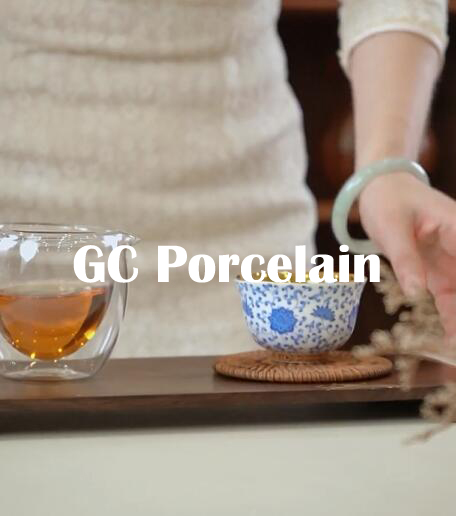
Health Benefits
The superior quality of Pu-erh tea is not only reflected in its aroma and taste but also in its mild nature and good pharmacological effects. As Pu-erh tea undergoes the transformation from raw to ripe tea, raw tea has the effects of dispelling wind, relieving the exterior, and clearing the head and eyes, while ripe tea has the effects of lowering qi and relieving constipation, making it a versatile medicinal tea.
Clinical trials by domestic and international experts have proven that Pu-erh tea has various benefits, such as lowering blood lipids, aiding weight loss, inhibiting bacteria, aiding digestion, warming the stomach, promoting salivation, quenching thirst, and detoxifying alcohol. Thus, Pu-erh tea is known as “beauty tea,” “slimming tea,” “longevity tea,” and “graceful tea” in countries and regions like Japan, France, Germany, Italy, Hong Kong, and Macau.
In addition to the above functions, modern research has confirmed that Pu-erh tea has more prominent therapeutic effects in the following aspects:
- Weight loss, lowering blood pressure, and anti-arteriosclerosis.
Research data shows that the unique fermentation process of Pu-erh tea produces new substances that can enhance the enzyme’s ability to break down abdominal fat.
Long-term consumption of Pu-erh tea can not only reduce body weight but also decrease cholesterol and triglycerides. Additionally, drinking Pu-erh tea can cause physiological effects such as vasodilation, temporary lowering of blood pressure, slowed heart rate, and reduced cerebral blood flow, making it beneficial for patients with hypertension and cerebral arteriosclerosis.
- Stomach care and protection.
Pu-erh tea is mild in nature, and at an appropriate concentration, drinking gentle Pu-erh tea does not irritate the stomach. The thick, sweet, and mellow Pu-erh tea forms a protective layer on the stomach lining, providing beneficial protection. Long-term consumption can help nourish and protect the stomach. Therefore, consumers who value Pu-erh tea call it “beauty tea” and “longevity tea.”
- Anti-inflammatory, antibacterial, and treatment of dysentery.
Medical research and clinical trials have proven that Yunnan Pu-erh tea has anti-inflammatory and antibacterial effects. Drinking strong tea juice ten times a day can treat bacterial dysentery.
- Anti-aging.
Research has shown that the oxidation of lipids in the human body is one of the mechanisms of aging. During the processing of Pu-erh tea, large molecular polysaccharides are transformed into many new soluble monosaccharides and oligosaccharides, making Pu-erh tea rich in vitamin C, vitamin E, tea polyphenols, amino acids, and trace elements. These substances have antioxidant effects, can enhance the body’s immune system, and delay the aging process, hence it is called “longevity tea.”
- Calming.
Generally, tea can affect sleep, but a type of Pu-erh tea called “Junxingxing” not only helps with sleep but also improves sleep quality.
If you have any questions or need to custom dinnerware service, please contact our Email:info@gcporcelain.com for the most thoughtful support!


